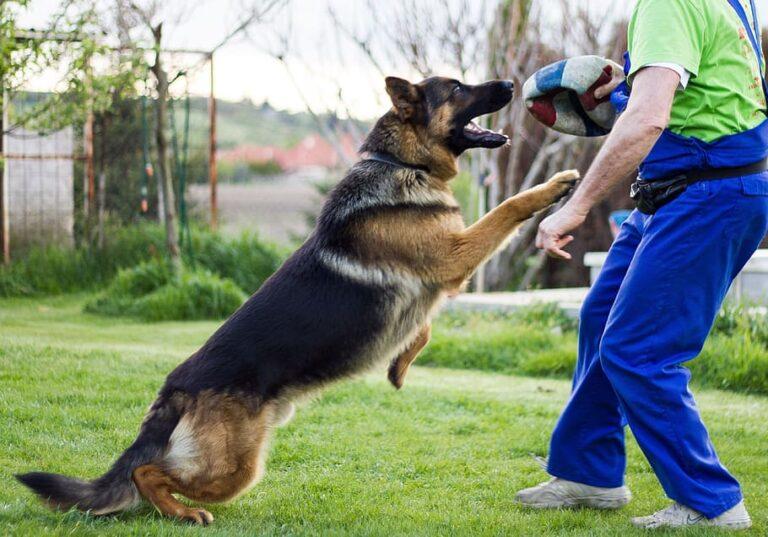What age can you use a bark collar on a dog?

What age can you use a bark collar on a dog?
Bark collars are valuable tools for dog owners dealing with excessive barking. However, it’s crucial to determine the right time to introduce them into your dog’s training routine. Understanding when to use a bark collar is essential for the well-being of your furry companion.
Many dog owners often wonder, “What age can you use a bark collar on a dog?” It’s a common question among those seeking to address excessive barking behavior in their pets. Here is the short answer: It is generally recommended to wait until your dog is around six(6) months old before considering the use of a bark collar. This age allows puppies to reach a stage of better physical and emotional development, making them more receptive to training techniques involving bark collars. However, remember that every dog is unique, and consulting with a professional trainer or veterinarian can provide personalized guidance on the right age and approach for using a bark collar based on your specific dog’s needs.
What age can you use a bark collar on a dog? Understanding the Right Time:
The Right Age for Bark Collars: The age at which you can safely use a bark collar on a dog is typically around six months or older. Puppies younger than six months are still in their developmental stages, and their barking is often a natural part of their communication and growth. Introducing a bark collar too early can have adverse effects on their learning and emotional well-being. It’s important to give your puppy time to mature and understand basic commands before considering a bark collar.
Consult a Professional: While six months is a general guideline, every dog is unique. Some may be ready for a bark collar earlier, while others may need more time. To make an informed decision, consult with a professional dog trainer or veterinarian who can assess your dog’s behavior, temperament, and specific needs. They can provide personalized guidance on when and how to use a bark collar effectively and safely.
Choosing the Right Time: Deciding when to use a bark collar for your dog is important. It’s generally best to wait until your dog is around six months old. Younger puppies are still growing and learning, so it’s kinder to give them more time before using a bark collar.
Consider Your Dog’s Personality: Think about your dog’s personality. Some dogs are okay with bark collars at six months, while others might need more time. It depends on how your dog behaves and why they bark. Understanding this can help you decide if a bark collar is right for them or if you should try different ways to train them.
Being Careful and Training Well: No matter when you start using a bark collar, it’s important to do it right. Choose a collar that fits your dog and use it as the instructions say. Let your dog get used to the collar without any corrections at first. Also, remember to reward your dog when they’re quiet. If your dog seems unhappy or anxious with the collar, you might need to stop using it and try other ways to help them stop barking. Always be patient and kind to your furry friend.
Are bark collars safe for little dogs?
Yes, bark collars can be safe for little dogs, but it requires careful consideration and responsible usage. Safety largely depends on the type of bark collar chosen and how it’s used. Here are some key points to keep in mind:
- Collar Size: Ensure that the bark collar you select is appropriate for your small dog’s size and weight. Many manufacturers offer collar options specifically designed for smaller breeds.
- Correction Type: Opt for bark collars that provide a range of correction options, such as sound, vibration, or low-level static stimulation. The choice of correction should be based on your dog’s temperament and sensitivity.
- Proper Fit: Correct fit is crucial to safety. The collar should be snug but not too tight, allowing room for comfort and movement. Always follow the manufacturer’s guidelines for fitting.
- Training and Monitoring: Introduce the bark collar gradually and monitor your dog’s response closely. Positive reinforcement and praise for quiet behavior should accompany bark collar training.
- Consult a Professional: If you’re unsure about using a bark collar on your small dog, consult with a professional dog trainer or veterinarian. They can provide guidance tailored to your dog’s specific needs.
Bark collars can be safe for little dogs when chosen, fitted, and used responsibly. Always prioritize your dog’s comfort and well-being during the training process.
Is it OK to use a bark collar on a puppy?
Using a bark collar on a puppy requires careful consideration and responsibility. The general consensus among experts and veterinarians is that it’s not advisable to use a bark collar on very young puppies, typically those under six months of age. Here’s why:
- Developmental Stage: Puppies are in a critical stage of physical and emotional development during their first few months of life. Barking is often a natural way for them to communicate their needs, express discomfort, or explore their surroundings. Introducing a bark collar too early can interfere with this crucial developmental phase.
- Alternative Training Methods: Instead of using a bark collar, experts recommend focusing on positive reinforcement training techniques for puppies. These methods involve rewarding desired behavior and teaching them how to communicate effectively.
- Consultation with a Professional: If excessive barking is a concern with your puppy, it’s best to consult with a professional dog trainer or veterinarian. They can assess the underlying reasons for the barking and provide guidance on appropriate training methods that do not involve bark collars.
It’s generally not recommended to use a bark collar on a very young puppy. Prioritize your puppy’s well-being and consider alternative, puppy-friendly training approaches to address excessive barking. Always consult with a professional for personalized guidance.
Do Vets Recommend Bark Collars?
- Bark collars are devices designed to control a dog’s barking behavior. They emit sounds, vibrations, or mild electric stimuli when a dog barks. Vets have mixed opinions about these collars. Some believe they can be effective in curbing excessive barking, which can disturb the dog’s owners and neighbors. However, other vets express concerns about potential negative effects on a dog’s well-being. They worry that these collars might cause stress, fear, or even pain to dogs, impacting their mental and emotional health.
- Vets usually consider alternative training methods, such as positive reinforcement and behavior modification, as safer and more humane options to address barking problems. Always consult with a veterinarian before using any training tools on your dog.
For small dog owners concerned about excessive barking, exploring alternatives to bark collars is essential. This article will discuss effective and humane alternatives for managing barking in small dogs while ensuring their comfort and well-being. Read more
Alternatives to Bark Collars for Small Dogs:
- Positive Reinforcement Training: Positive reinforcement techniques involve rewarding your small dog for quiet behavior rather than punishing them for barking. When your dog stays quiet, offer treats, praise, or playtime to reinforce the desired behavior. Over time, your dog will associate silence with positive outcomes.
- Behavioral Training: Address the root cause of your dog’s barking through behavioral training. Identify triggers that lead to barking and work on desensitizing your dog to those triggers. Gradual exposure and reward-based training can help reduce barking caused by fear, anxiety, or excitement.
- Interactive Toys and Puzzles: Keep your small dog mentally stimulated with interactive toys and puzzles. Boredom often leads to excessive barking, and these toys can provide mental engagement and distraction. Puzzle feeders, treat-dispensing toys, and interactive games can help redirect your dog’s energy in a positive way.
- Professional Help: If your small dog’s barking issues persist, consider consulting a professional dog trainer or behaviorist. They can assess your dog’s specific needs and create a tailored training plan to address the barking problem effectively and safely.
There are several humane alternatives to bark collars for small dogs. Positive reinforcement, behavioral training, interactive toys, and professional guidance can all play a significant role in reducing excessive barking while ensuring your small dog remains happy and well-adjusted.
Conclusion
The question “What age can you use a bark collar on a dog?” is a crucial one for responsible dog owners. Throughout this article, we’ve explored the factors that influence the right time to introduce a bark collar to your furry companion. While the general guideline suggests waiting until your dog is around six(6) months old, it’s important to remember that every dog is unique. Tailoring your approach to your dog’s specific needs, temperament, and sensitivity is paramount. Seeking advice from professional trainers or veterinarians can provide valuable insights and ensure that you make the most informed decision. Ultimately, the well-being and happiness of your canine friend should be the guiding principle in your choice of when and how to use a bark collar.
You can also read this: Do bark collars work on large dogs?





